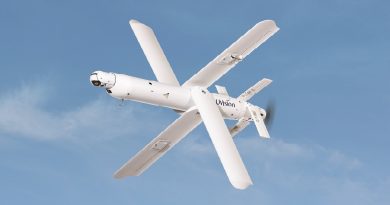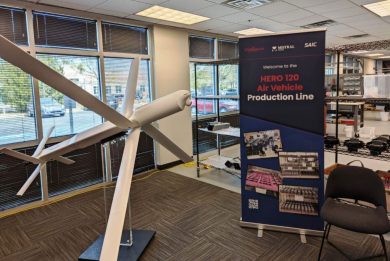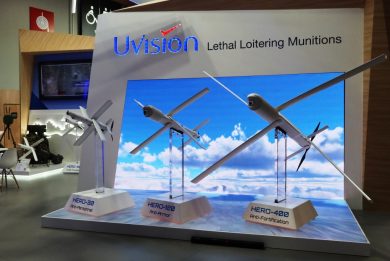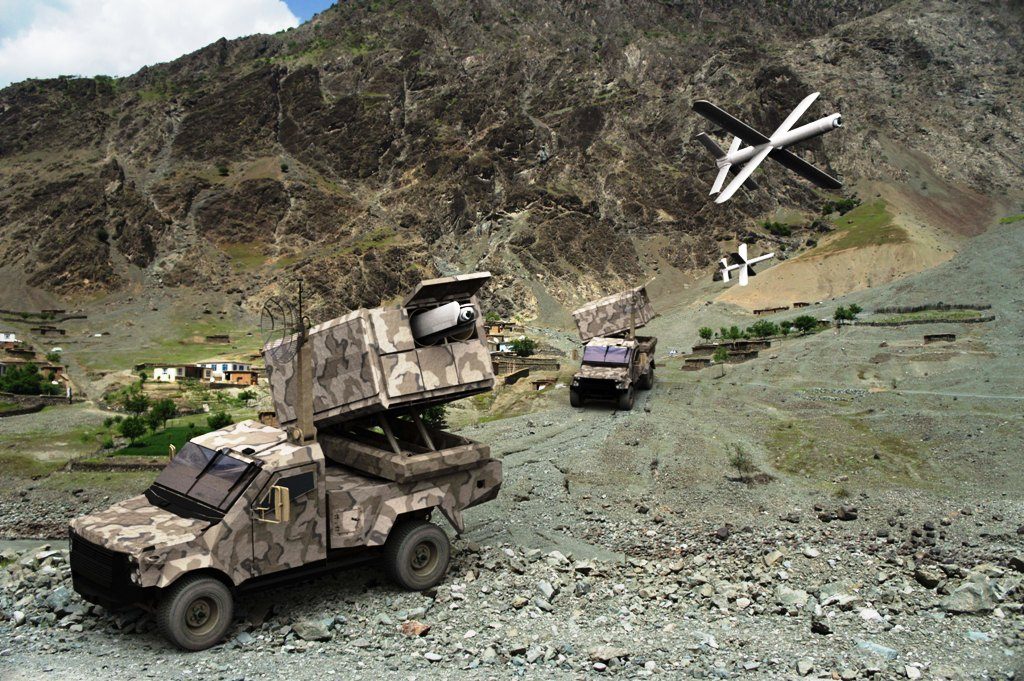
PAS19: UVision unveils a new multiple launcher and new munition configurations
UVision, the Israeli company specialised in loitering munitions, unveiled in Paris a number of new products, among which the six-round launcher for its Hero-400RC munition. The launcher has been developed to be integrated on light armoured vehicles; it has already been integrated on paper on Plasan’s SandCat 4×4 vehicle, another one being taken into consideration being the JLTV, the US being a key market for the company.
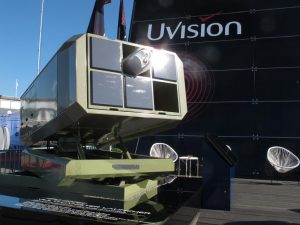
With a weight of around 650 kg loaded with six munitions, and the lack of recoil due to the soft launch system developed by UVision, the launcher should fit well also on much lighter vehicles than those aforementioned. Should bigger vehicles be considered, UVision is ready to scale up its launcher to contain a higher number of munitions, while solutions with a smaller number of Hero 400RC can also be designed should a customer require them. The system is offered also in naval configuration, and can be remotely controlled.

“This launcher together with its munition will enhance the fire capability of those forces that need to engage the enemy in a very precise way and in a quite mode,” Avi Mizrach, UVision CEO said at the unveiling ceremony that took place on Day Two of the show.
Two concepts were considered for reloading, one with single munition being loaded in the launcher the other, apparently the favoured, being based on a six-rounds module, which would definitely shorten the reload time. The munition is fully ready in the rail-launched configuration, production being due to start in Q4 2019.
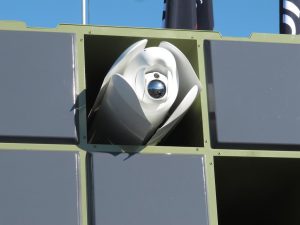
With a weight of 40 kg, the Hero-400 EC is 2.1 meters long, has a wingspan of 2.4 meters, and a speed between 50 and 100 knots, depending the phase of the mission. It is fitted with a mutipurpose warhead containing 10 kg of explosive, two data link being available with respective ranges of 40 or 150 km. A pusher propeller powered by an electric motor provides an endurance of two hours. A mock-up of the canister-launched version, the one that will be fitted in the new launcher, was visible at the exhibition, this being not yet operational. The Hero-400EC multiple launcher designed is now finished, first firings being planned in early 2020.
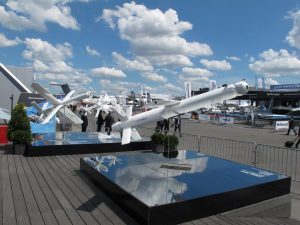
UVision already developed a multiple launcher for its smaller Hero-120 and Hero-30 munitions. These have a respective endurance of 60 and 30 minutes, a weight of 12 and 3.5 kg, and a warhead of 4.5 and 0.5 kg. The data link range is of 40 km for the bigger munition and of 5 or 10 km for the smaller one, with an option for 40 km. The multiple launcher dedicated o those smaller munitions can host nine of them; designed to fit the Hero-120 round, the Hero-30 can also be fitted using a sabot. The overall weight with the HERO-120 is of around 250 kg, the system being able to be integrated on very light vehicles.
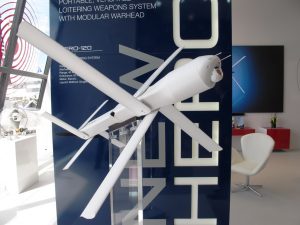
At the Paris Air Show the Hero-120 has been shown in its new design, with different aerodynamics that allow increasing endurance, the new design also allowing canister launch. The original Hero-120 had a cylindrical body, while the new has a romboidal section which not only improves aerodynamics but also allows an easier integration of foldable weapons for canister launch. The front section is bigger than the rear one, allowing to host warheads which weight ranges from 1.5 to 4.5 kg. All warheads are fitted with a three-mode fuse, proximity, point detonation and delayed action, the key point being that the fuse mode can be changed while the munition is in flight, should the target change. According to UVision a “strategic customer” required an anti-fortification warhead, this being at the maximum payload and being capable to penetrate 20 cm double reinforced concrete. The standard warhead is the antipersonnel blast-fragmentation one, UVision being about to integrate a thermobaric warhead. The munition in this configuration is already under contract in the United States, first flight being expected very soon; the US chose as warhead that of the Javelin missile, weighing around 2.3 kg, providing antitank and antipersonnel capabilities.
UVision is concentrated on the production of the loitering munitions and on the corresponding control software. As an example, a US Special Forces unit that already fields counter-IED robots asked to use the same controller, which allows reducing the logistic footprint as well as simplifying training issues, and UVision easily installed its software on the existing hardware.
The same software is used in the Hero simulator, which was exhibited in Paris and could be used by selected visitors, showing how easy it is to operate a Hero munition, autotracking allowing a precise dive towards the target, fine aiming being possible until the very last moment.
“UVision is pioneering the loitering munition field,” Avi Mizrachi said, “and is putting a lot of money in research and development. In the coming year we expect to get a number of orders from NATO customers as well as from the US and Israel,” the company CEO concludes.
Pictorial by UVisione; photos by Paolo Valpolini

